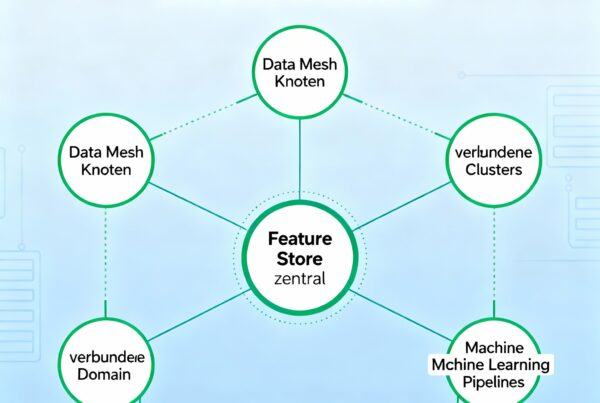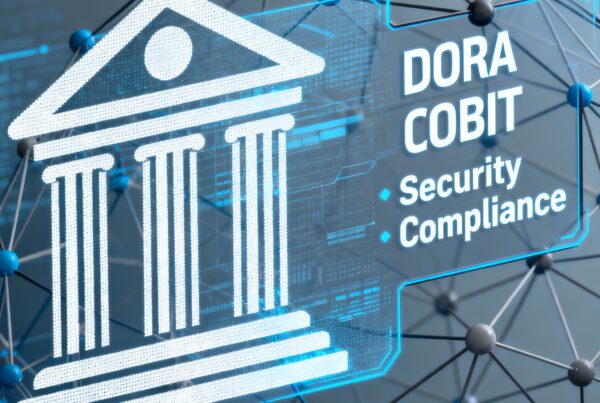Blockchains – the basics
A blockchain is an electronic register for digital data sets, events or transactions that are managed by a decentralized system. The entries in the register are grouped into blocks and stored in a chronological order. The blocks are linked via cryptographic signatures.
The fundamental technical concepts behind blockchains are cryptography and Peer-to-Peer principals. The status of the system is not verified by central instance but by every node in the system.
The outage of a single node has no influence on the status of the entire system. As the overall status of the system is stored by every single node. In a blockchain every node stores the entire data of the blockchain redundantly. The nodes and thereby the participants of a decentralized blockchain provides hardware resources to serve data and services for the entire system. The nodes communicate directly without a centralized entity that coordinates the communication.
Cryptography and consensus mechanisms are used by all nodes to coordinate and verify the system status and are seen as the real innovation behind blockchain systems.
In addition to that, blockchain transactions can be tied to computational logic and can effectively be programmed. So users can set up algorithms and rules that automatically trigger transactions between nodes.
Bitcoins as an example for using blockchains for payment transactions
Bitcoin as a Peer-to-Peer based digital currency uses blockchains to store all payment transactions in a chronological order decentralized in all nodes of a system, making a central intermediary obsolete to reproduce the system status with all historical transactions. Secure transactions are provided by cryptographic algorithms i.e. Public-Key Encryption and a cryptographic hash-function. Nodes can either be miners or passive nodes. Both node types can verify and forward transactions but only miner nodes are able to insert new transactions into the blockchain systems. The payment transaction is verified by a innovative technical concept called Proof-of-Work between the miners to prevent from fraudulent transactions.
Tiny Discussion
Major advantages
- Less transaction costs as intermediaries become obsolete
- Less investment and maintenance costs for high-perfomance hardware (IT Infrastructure costs)
- Higher transaction security through data encryption
- Less probability for system outages
Criticism
- Less scalability
- More difficult maintenance of access rights
- Complicated integration with legacy systems
- Data privacy issues depending on the scenario
Application areas
- [..]
- adopting crypto currencies
- internal database for applications like managing physical and digital assets, recording internal transactions, and verifying identities
- bookkeeping journal
- audit trails for tracking highly privileged system user activity
- smart contracting – directly linked actions to contract fulfillment by encoding contracts into if-then transactions, e.g.For example when two banks do a complex derivative trade with each other that doesn’t go through a clearing house, it is called an “Over The Counter” or OTC trade. These are agreements between the two banks, without third party validation. These trades are usually bets – i.e. variations of “if this happens before the end of the year then you pay me, else I pay you”. Due, to formal misunderstandings there are often disagreements between the two parties on specific parameters of the trade. With smart contracts the “contract” is formalized and there is no space for discussions.
Differentiating blockchains
Not every blockchain is like the other. Depending on the situation and requirements it needs to be set-up in a different manner. Depending on the set-up the benefits express differently.
- private vs. public
the blockchain is either accessible to a limited amount of nodes or to everyone - only approved verification vs. unlimited verification
A node needs to be approved by a central instance or consortium to be able to verify a transaction
A private blockchain with managed authority is less decentralized than a entirely public blockchain like the bitcoin network. However, with the help of a private blockchain system for e.g. identity verification in an single company, privacy issues won’t occur and there are no scalability challenges.
Management advice
In order to experiment with blockchains an initial analysis helps to identify potential investment areas in the specific context of an enterprise. The analysis should be carried out focusing on two dimensions:
- novelty
the degree to which an application is new to the business: the newer the more difficult to explain what problem it solves - complexity
the amount of complexity and coordination is determined by the number and type of participants (nodes), the type of technology, legislation etc.
By means of these dimensions, the often cited small contracts won’t turn to be the first priority as they are bound major social, legal, and political barriers. They involve coordinating the activity of many actors and gaining institutional agreement on standards and processes. An easy adoption for most companies would be application which minimizes risk because it is not new and involves little coordination with third parties. Examples might be to use blockchain internally as a database for applications like managing physical and digital assets, recording internal transactions, and verifying identities.
By classifying the blockchain applications according to above mentioned dimensions, it is possible to prioritize investment areas in and visualize it in a matrix for straight-forward management discussions.
At the end of a day, every discussion around a solution should end up with an evaluation, whether the use case and advantages can’t be adopted easier and less expensive with established technologies or centralized database solutions. Compare with the alternative investment! For a particular problem scenario, blockchain should not be adopted just because it is considered a hype!





